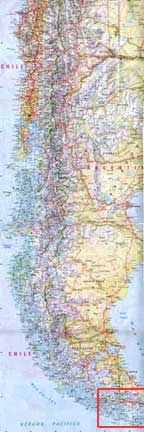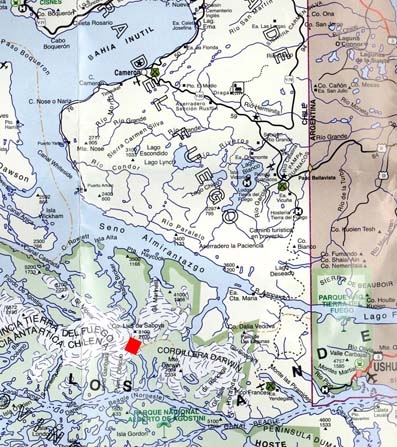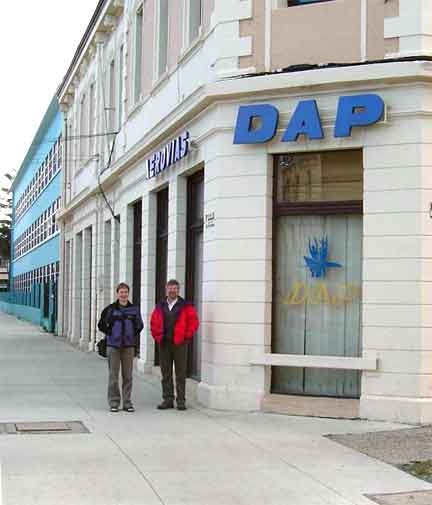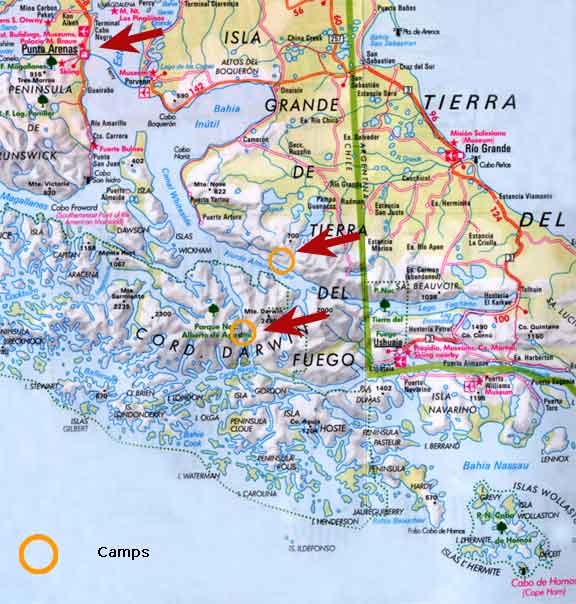Ice coring in the Patagonia Ice Fields
Ice coring in the Patagonia Ice Fields.
Abrupt Climate Change – Ice cores from Patagonia
This project is supported by a grant from NOAA, Office of Global Programs
Paul A. Mayewski, Andrei Kurbatov and Bjorn GrigholmUniversity of Maine
Mark Wumkes, Glacier Data, Fairbanks Alaska
Anja Wendt and Professor Gino Casassa,
CECS, Valdivia, Chile.
February 13, to April 10 of 2006
We are currently funded by NOAA to investigate the causes of abrupt climate change events over the Southern Hemisphere through the recovery and analysis of ice cores. Our companion research with the US National Science Foundation throughout Antarctica allows us to reconstruct the last 200-500 years of climate change over Antarctica and the Southern Hemisphere. The extension of our research into the Cordillera Darwin is very important in this endeavour since it will allow us to extend climate reconstructions into South America. During the February to March of 2005 we conducted a preliminary reconnaissance trip in the Patagonian fjords. Last year’s expedition allowed us to explore the region and pick sites for this year’s coring.
While in Chile we will be working closely with our collaborators: Anja Wendt who is a Postdoctoral Research Fellow and Professor Gino Casassa, of CECS, Valdivia, Chile.
Ice coring in the Patagonia Ice Fields Journals
| February 20, 2006 |
Bjorn writes from Punta Arenas,After a long but pleasant flight from Bangor to Patangonia, which took us across the eastern United States, Gulf of Mexico, the equator, and the Andes, we landed in Punta Arenas. Slanted trees and and crooked fences made it immediately clear that the wind has a tremendous impact on the region.
Punta Arenas, population 120,000 and founded in 1849, is the southern most city in Chile and due to it’s proximity to the Straits of Magellan was Chile’s most important city until the construction of the Panama Canal.
Our scheduled departure for the Cordillera Darwin has been delayed a week due to custom difficulties, in the meanwhile we have been buying necessary field supplies. On Monday we should have access to all our cargo, we will repack and take a truck to Pacos Guanacos a small village on the Chile/Argentina border. We will spend two days there and then if the weather is clear will take a helicopter to the top of Marionelli glacier and access ice core drilling conditions. In addition to drilling an ice core we plan to conduct radar and GPS surveys. Hopefully, the weather will remain clear and the expedition will not be additional delayed.
Hope things are well,
Bjorn |
| February 22, 2006
|
Bjorn writes from Punto Arenas,We will no longer taking a truck to Pampa Guanacos, instead it has beendecided to take a fishing boat across the Strait and set up a camp nearthe foot of the Marinelli glacier. The major advantage to this plan isfar better accessment of weather conditions on and around the glacier.This is essential for establishing helicopter flight times. The campsite will have to be close to areas suited for both helicopter and boatpick up, along with fresh water availability. Another concern will bewaves created by glacier calving(ice breaking off the glacier andfalling into the water) so our camp will have to be at an elevated pointaway from the shoreline. Today will pack the boat and tomorrow we willleave between 4-5am. |
| February 27, 2006
|
Bjorn reports from base camp,We arrived on top of the glacier last Thursday and have been busy setting up our equipment and camp and scouting out a good drilling site.
However, we have been having a lot of storms so work is slow. We did manage to complete a radar survey of the drill site, so we know exactly where we want to set up. We still need to move our camp about 300 meters, but that will have to wait for the weather to clear.
We have been very fortunate to have help from home with our weather forecasts. We can’t just turn on the “Weather Channel” to get “Your Local on the 8s” forecasts. Dan Dixon, a fellow graduate student at UMaine, checks the models and maps from the University of Wyoming and Ohio State every day and sends us a message of what to expect. It looks like we will have some more stormy weather for a few days anyway.
We are all well and eager to get started on drilling an ice core. |
| March 4, 2006 |
Paul reports from the Cordillera Darwin,Everything is fine here and going pretty well.The work is progressing a bit more slowly than we would like. Right now we are still scheduled to pull out of the field on March 11th, if the weather is good. It could be a few days either way. |
| March 10, 2006 |
Paul reports from the Cordillera Darwin,Everything is fine here, although we are certainly ready to be somewhere else. We have been watching the weather very closely trying to find a window for the helocopters to come and pick us up. Everytime we think we have some clear weather and contact the flight company, by the time the helicopters are ready to take off, the weather has moved back in.
We are getting used to the conditions here and everyone is in good spirits. Hopefully, the next time we report in, we will be off the ice and in a nice hotel room. |
| March 13, 2006 |
Paul reports from the beach,We are on the beach across channel from the glacier. We were able to have a helicopter pick us up from the glacier yesterday. The weather has certainly been a challenge, since this is one of the windiest places on earth. We were not able to get all of our equipment on the flight with us for weight reasons, so we will have to watch the weather carefully so we can go back and pick everything up. Right now we are waiting for the fishing boat to arrive.
We still have work to do to wrap up our field season, so we expect to spend a little time in Punta Arenas before we head back to Maine and for Mark, Alaska.
“Hello” to all of our family and friends. |
| March 15, 2006 |
Paul reports from Punta Arenas,After an interesting trip on the fishing boat, we have arrived in Punta Arenas. We are all pretty tired and plan to rest up for a day or two. We will try to send another entry soon. |













